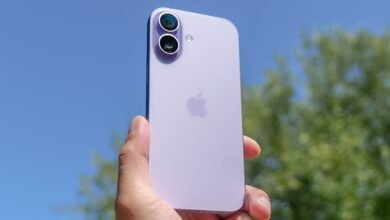Apple Reveals Strategy for Smarter AI Using Your Data, Promises Privacy Stays Paramount

▼ Summary
– Apple is advancing its AI capabilities while maintaining its commitment to user privacy by improving AI models without accessing personally identifiable information.
– The company uses on-device processing to keep raw data localized and employs differential privacy to add statistical “noise” to datasets, preventing the linking of data to individuals.
– Secure aggregation anonymizes and aggregates useful data points from many users before they leave the device, further protecting individual identities.
– Apple’s goal is to enhance AI features in its platforms, such as more accurate Siri suggestions, improved keyboard predictions, and smarter photo curation, without compromising user trust.
– Transparency and user control are emphasized, with Apple providing toggles and information on data collection, allowing users to opt-out of certain data sharing, ensuring privacy and progress coexist.
Apple finds itself navigating a familiar tightrope: advancing its artificial intelligence capabilities while upholding its long-standing commitment to user privacy. The company detailed its latest approach this week, outlining how it intends to learn from user interactions to improve AI models without accessing personally identifiable information.
The core challenge for any AI development is data – vast amounts of it are needed to train sophisticated models. While some competitors rely heavily on cloud-based processing of user data, Apple aims to leverage the information generated across its billion-plus devices in a way that aligns with its privacy-first ethos.
On-Device Smarts and Privacy Techniques
Cupertino’s strategy leans heavily on techniques designed to decouple data insights from individual identities. Reports suggest a multi-pronged approach:
- On-Device Processing: Whenever feasible, learning will happen directly on the user’s iPhone, iPad, or Mac. This keeps raw data localized, preventing it from being sent to Apple’s servers in the first place. Features like predictive text improvements often rely on this localized learning.
- Differential Privacy: For data that is aggregated from users for analysis, Apple plans to employ differential privacy. This sophisticated technique involves adding statistical “noise” to datasets before analysis. It allows Apple to spot trends and patterns across large numbers of users (e.g., common misspellings, popular emoji sequences) without being able to link specific data points back to any single person. Think of it as learning about the forest without seeing the individual trees.
- Secure Aggregation: Data points deemed useful for broader model training are anonymized and aggregated with contributions from many other users before leaving the device, further obscuring individual origins.
The Goal: Better AI Experiences
Why go through these complex technical hoops? Apple aims to enhance the intelligence woven into iOS, macOS, and its other platforms. This could translate to:
- More accurate and context-aware suggestions from Siri.
- Improved keyboard predictions and autocorrect.
- Better photo curation and search within the Photos app.
- Smarter features across the operating system that anticipate user needs.
Essentially, Apple wants the benefits of large-scale data analysis – the kind that makes AI genuinely useful – without compromising the user trust it has carefully cultivated.
Transparency and User Control
Apple typically provides users with toggles and information regarding data collection, even anonymized data. While specifics on new controls related to this refined AI training process haven’t been fully detailed, users can generally expect explanations within privacy settings and the option to opt-out of certain types of diagnostic and usage data sharing. Maintaining transparency will be crucial as these systems roll out.
The Balancing Act
This initiative underscores Apple’s distinct position in the tech landscape. As rivals push aggressively into AI, often with more data-hungry models, Apple is betting that its privacy-preserving approach can deliver competitive AI features without asking users to trade away their personal information. The effectiveness of these techniques, and whether they allow Apple’s AI to keep pace with competitors, remains a key area to watch. For now, the company is signalling that privacy and progress don’t have to be mutually exclusive.
(Inspired by: TechCrunch)





